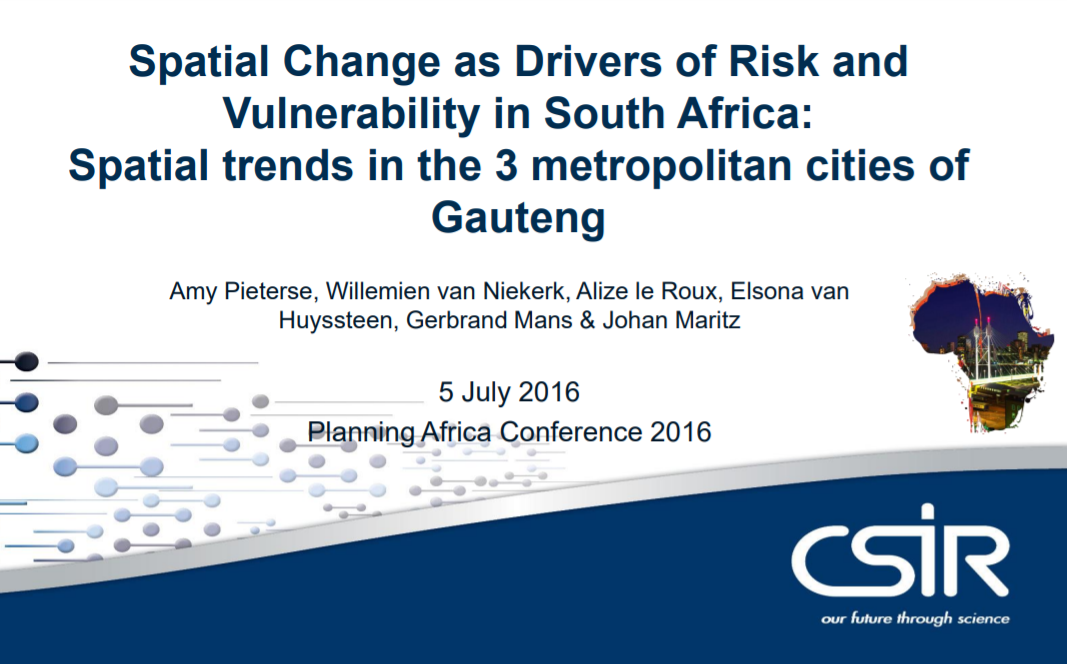Spatial change as drivers of risk and vulnerability in South Africa
Spatial trends in the 3 metropolitan cities of Gauteng

05 July 2016
English
uKESA Librarian, stepSA Librarian
Presentation
Council for Scientific and Industrial Research, Spatial Temporal Evidence for Planning South Africa (stepSA)
Africa
Urban spatial change trends manifest most noticeably in Gauteng. This not only confirms perceptions about metros as increasingly being the spaces where the future of South Africa’s youth will be determined but also once again rings the alarm bells for urgent, focused and innovative government support to address urban risks and service delivery implications. This presentation explores spatial patterns of change as drivers of risk and vulnerability in Tshwane, Johannesburg and Ekurhuleni. The authors find that:
- population growth occurs in places where housing is more affordable and close to opportunities
- Traditionally marginalised areas have generally experienced improved access, services and increased income levels
- Urban centres are seeing an influx of young adults, increasing unemployment and a decline in access to services
- Cities are experiencing high levels of mobility and in-migration as well as a decline in average household size



Comments